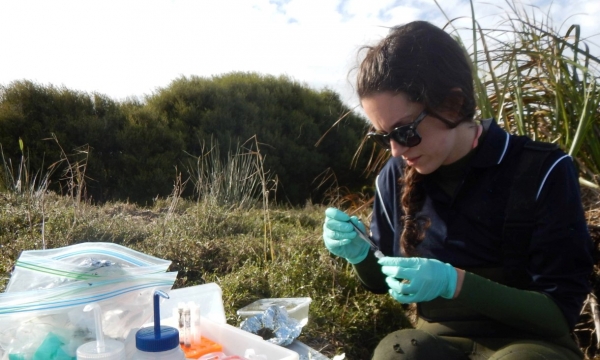The international team of scientists buried 19,000 bags of green tea and rooibos in 180 wetlands across 28 countries to measure the ability for wetlands to hold carbon in their soil, known as wetland carbon sequestration.
While tea bags may seem an unusual instrument to measure this phenomenon, it is a proven proxy method to measure carbon release from soil into the atmosphere. However, this is the first time teabags have been used for a large-scale, long-term study and the tea leaves have revealed which types of wetlands are leaking the most carbon.
RMIT University’s Dr Stacey Trevathan-Tackett led the study published in Environmental Science and Technology as part of an Australian Research Council DECRA Fellowship while at Deakin University.
Read more at: RMIT University
RMIT University’s Dr Stacey Trevathan-Tackett led the study published in Environmental Science and Technology as part of an Australian Research Council DECRA Fellowship while at Deakin University. (Photo Credit: Paul Carnell)
Sci/Tech Top Stories Climate Agriculture

